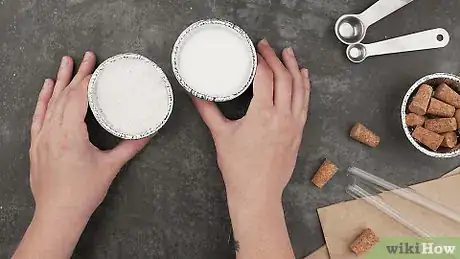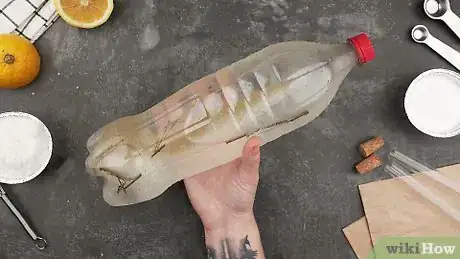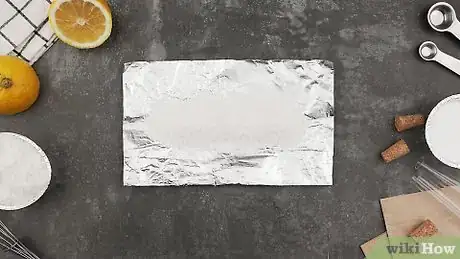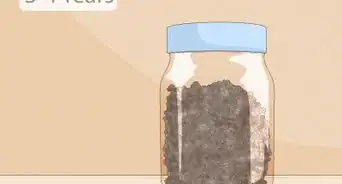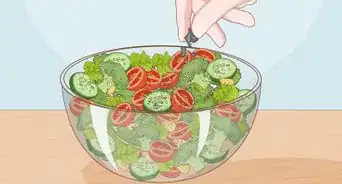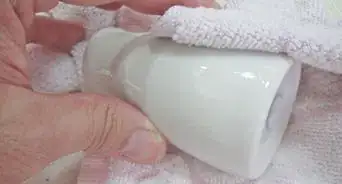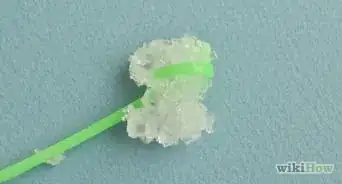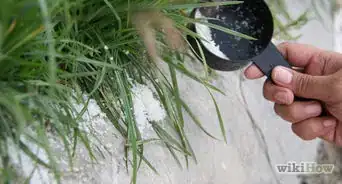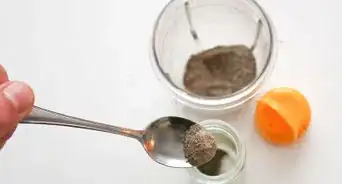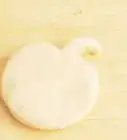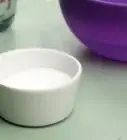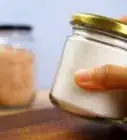wikiHow is a “wiki,” similar to Wikipedia, which means that many of our articles are co-written by multiple authors. To create this article, 19 people, some anonymous, worked to edit and improve it over time.
There are 8 references cited in this article, which can be found at the bottom of the page.
The wikiHow Culinary Team also followed the article's instructions and verified that they work.
This article has been viewed 265,714 times.
Learn more...
Making your own sea salt is an excellent way to bring the taste and smell of your favorite seashore into your kitchen. Salt straight from the ocean takes on the characteristics of its environment, making it possible to incorporate the essence of the sea into your cooking. To make it, you'll need a clean source of saltwater and plenty of time and space in your kitchen. See Step 1 to learn how to make your own sea salt from scratch and season harvested sea salt to produce a variety of flavors.
Steps
Making Sea Salt from Scratch
-
1Understand the process. Commercial salt makers produce sea salt in much larger scale than a home salt maker would, but knowing the commercial techniques can increase your knowledge and salt making possibilities. Here's how they do it:
- Small ponds are filled with sea water and the water is left to evaporate. The product left behind after all the water is gone is sea salt. This process works best in areas where there is a lot of sun and very little rain.
- Salt water is piped into large steel pans. Any mud or impurities settle to the bottom and the remaining good water is siphoned off and heated. As the water heats, any foam that forms is skimmed off the top and the water continues to evaporate until only salt crystals remain.
- Additives are sometimes included. Commercial seas salt makers sometimes add calcium and magnesium to their salts to provide added nutrition and a distinct taste.
-
2Gather salt water. Water rich in salt is gathered from salt-rich seas or salt ponds. Depending on where the water is gathered from, the resulting salt will take on varying shades of color due to the variety of minerals present in each respective location. Collecting some water from the ocean may not provide the quality salt you are hoping for, especially for cooking purposes, because of the low salinity of the water, but it's worth experimenting with water from a variety of sources to find out what produces the best salt.[1]
- It's essential to gather salt water from a clean source. If you know an area to be polluted, do not gather water from there. Air pollution, oil and chemical runoff, and other types of pollution will affect the taste and quality of the salt.
- If an area is safe for fishing, it's probably safe to assume the water is clean enough for salt harvesting, too.
- A gallon-sized glass or plastic jug is a good size for gathering water. One gallon of water will yield about 3 ounces of salt.
Advertisement -
3Strain the water. It's necessary to remove sand, shells and other sediments from the water before you harvest the salt. Use cheesecloth to strain your salt water. One or several layers can be used. To be extra sure impurities are removed, strain the water several times. It won't affect the salt content.
-
4Evaporate the water. Sea salt is the product that remains from evaporating the salt water. Plan ahead for the evaporation to take at least a few days, and often several weeks. For home sea salt making, one of several techniques can be employed.[2]
- Turn your oven to its lowest setting. Pour the water into a high-sided container and place it in the oven. Let the water slowly evaporate over the course of several days.[3]
- Put your strained salt into a pot and boil until almost all the water is gone. Let the sun do the rest. Remove the damp salt from the pot and place it on a plate or in a bowl. Sit it in the sun to finish evaporating all the water.
- Place your strained water in a bowl or shallow dish and allow it to sit out in the open so the water evaporates. What is left behind when all the water is gone is the sea salt. This method could take several weeks.
-
5Harvest the salt that's left behind. You'll see a crust start to form when the water evaporates. Use a spoon to scrape it into a container. Salt crystals will form in a range of shapes and sizes, and may take on different colors depending on where you collected your water.
- You may choose to grind it to a finer texture. You can use a salt grinder for this purpose.
- Enjoy the salt by tasting it plain or using it in your everyday cooking.
Making Seasoned Sea Salt
-
1Make lemon salt. Salt combines beautifully with a variety of different flavors, and lemon is one of the best.[4] The salt and citrus combine to create a seasoning you can use for every meal of the day. This bright, refreshing salt is perfect sprinkled on fresh vegetables, salads, and fish:
- Mix 1/2 cup sea salt, 1/2 cup lemon juice and the zest of 1 lemon in a bowl.
- Spread the mixture on a rimmed baking sheet.
- Bake it in the oven turned on its lowest setting until the moisture has evaporated - several hours or overnight.
- Scrape the lemon salt into a container.
-
2Make bourbon salt.[5] When salty and sweet flavors are combined, the taste is pretty irresistible.[6] In this case sea salt is combined with a bourbon and sugar syrup to create a rich, deep-tasting salt that you can sprinkle on baked goods for a wonderful treat.[7]
- Simmer 1 cup of bourbon in a saucepan over medium heat until it's reduced to about 1/4 cup.
- Combine the bourbon reduction, 1/2 cup sea salt and 1/2 cup sugar in a food processor, pulsing until it becomes sandy in texture.
- Spread the mixture on a rimmed baking sheet.
- Bake it in the oven turned on its lowest setting until the moisture has evaporated - several hours or overnight.
-
3Make smoked salt. Next time you fire up your smoker to smoke a piece of meat, put a tray of sea salt in there, too. Line a tray or a piece of sturdy aluminum foil with 1/2 cup or more of sea salt. Allow it to smoke in the smoker for several hours, then pour it into a container. Enjoy the rich, fragrant taste of smoky sea salt on baked potatoes, pizza and other savory dishes.[8]
Community Q&A
-
QuestionI tried the boiling method and there was no salt in the pan when the water evaporated. Did I do something wrong, or could it be a low salinity source?
 Lord HarambeCommunity AnswerAs the article says, you have to boil it at the lowest setting possible. If this is not the case, the salt may also evaporate. Also, keep in mind that there is very little salt per gallon of sea water.
Lord HarambeCommunity AnswerAs the article says, you have to boil it at the lowest setting possible. If this is not the case, the salt may also evaporate. Also, keep in mind that there is very little salt per gallon of sea water. -
QuestionIs table salt also sea salt?
 Community AnswerSea salt and table salt have the same nutritional value, and both are made similarly. But table salt usually contains added iodine.
Community AnswerSea salt and table salt have the same nutritional value, and both are made similarly. But table salt usually contains added iodine. -
QuestionIs sea salt naturally white in color?
 Community AnswerFor a lot of salts, it depends where you get it. For example, Himalayan sea salt is usually pink in color because of the minerals and the nutrients in the water. But it also depends on the process that used to create the sea salt. For example, if the salt is smoked, it will be a harsh brown color whereas if it's boiled, it will usually be a white or light color.
Community AnswerFor a lot of salts, it depends where you get it. For example, Himalayan sea salt is usually pink in color because of the minerals and the nutrients in the water. But it also depends on the process that used to create the sea salt. For example, if the salt is smoked, it will be a harsh brown color whereas if it's boiled, it will usually be a white or light color.
Things You'll Need
Sea Salt from Scratch
- Salt water
- Cheesecloth
- Baking dish
- Storage container
Seasoned Sea Salt
- Sea salt
- Lemons
- Bourbon
- Sugar
- Smoker
References
- ↑ https://lifehacker.com/make-your-own-sea-salt-5856688
- ↑ https://www.washingtonpost.com/lifestyle/food/salt-of-the-sea-as-easy-as-evaporation/2013/04/08/400f610e-9018-11e2-9cfd-36d6c9b5d7ad_story.html?utm_term=.9fdd6e80822b
- ↑ http://www.nydailynews.com/life-style/show-salty-side-article-1.1393923
- ↑ https://snapguide.com/guides/make-lemon-salt/
- ↑ https://www.theawl.com/2012/09/how-to-make-bourbon-salt/
- ↑ http://www.nytimes.com/recipes/12732/grilled-pork-loin-with-wine-salt-rub.html
- ↑ http://www.yankeekitchenninja.com/2014/12/homemade-DIY-bourbon-salt.html
- ↑ https://simpledailyrecipes.com/935/make-your-ownsmoked-salt/
About This Article
To make your own sea salt, gather a gallon of saltwater from an area with clean water, such as a spot that you know is safe for fishing. Strain the water through a cheesecloth to remove impurities such as sand, shells, and other sediments. Turn your oven to the lowest heat setting, pour the water into a deep baking dish, and place it in the oven. Let the water evaporate for several days until only salt remains. Use a spoon to scrape the salt into a container, and season the salt if you like. If you want to learn how to add seasonings to your salt, such as lemon or bourbon, keep reading!
